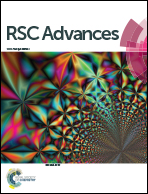Effect of surface free energy and wettability on the adhesion property of waterborne polyurethane adhesive
Abstract
According to van Oss–Chaudhury–Good's theory, some key adhesion parameters (involving surface free energy, interfacial free energy, adhesion energy, and the spreading coefficient, etc.) of waterborne polyurethane (WPU) adhesives on shoe substrates, styrene–butadiene–styrene rubber (SBS), ethylene vinyl acetate (EVA), and polyvinyl chloride (PVC) were calculated and the relationships among the surface free energy, interfacial free energy, wettability, and adhesion property of WPU adhesives to these substrates were investigated in detail. The results indicate that the surface free energy of the substrates is the dominant parameter to influence the wettability and adhesion strength, while wetting agents can efficiently improve the wettability via decreasing the surface free energy (γL) of the adhesive, although it cannot noticeably alter the adhesion strength. Further analysis found that surface modifications, such as plasma and halogenation treatments, can introduce some active groups (–OH, –NH, or –Cl) onto the surface of SBS, which increases the surface polarity of SBS and enhances the interfacial interaction and adhesion strength of the WPU adhesives, especially in the presence of an isocyanate-terminated hardener.


 Please wait while we load your content...
Please wait while we load your content...